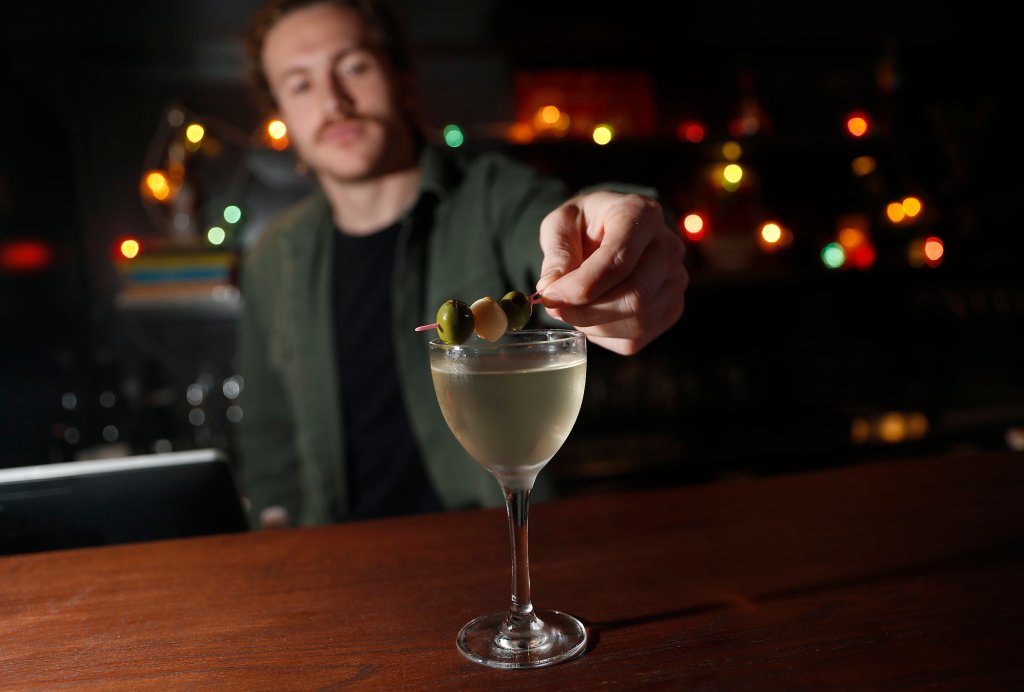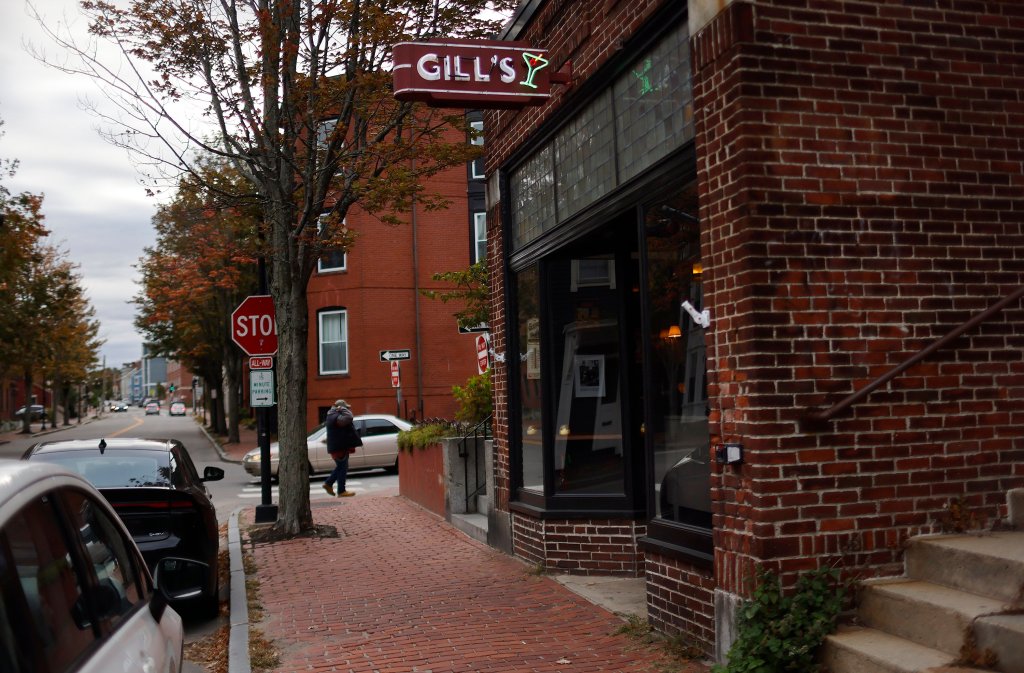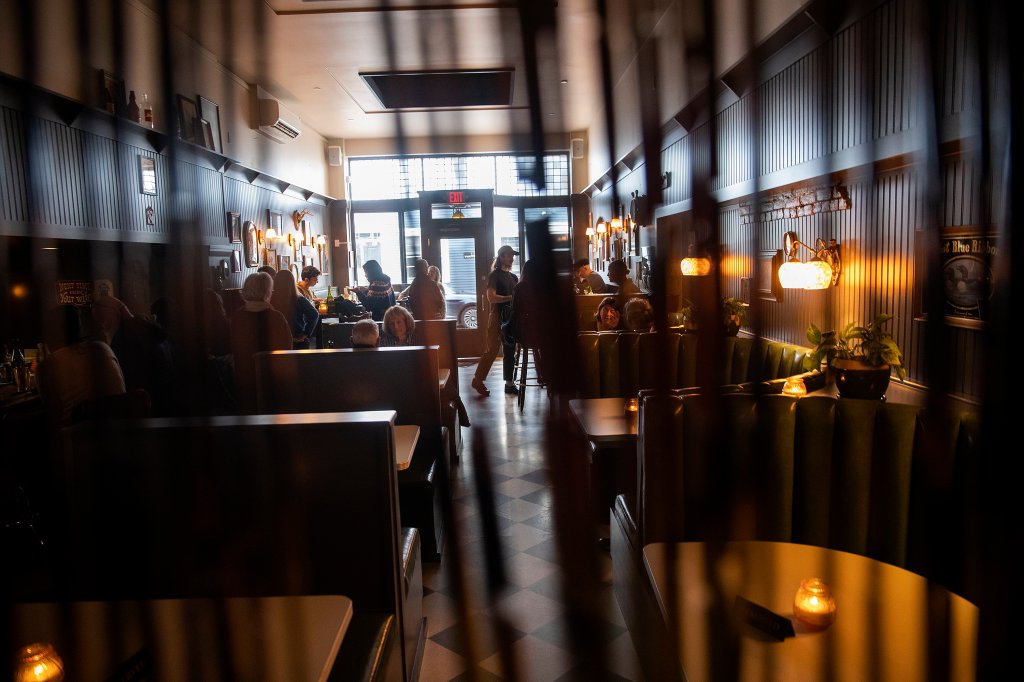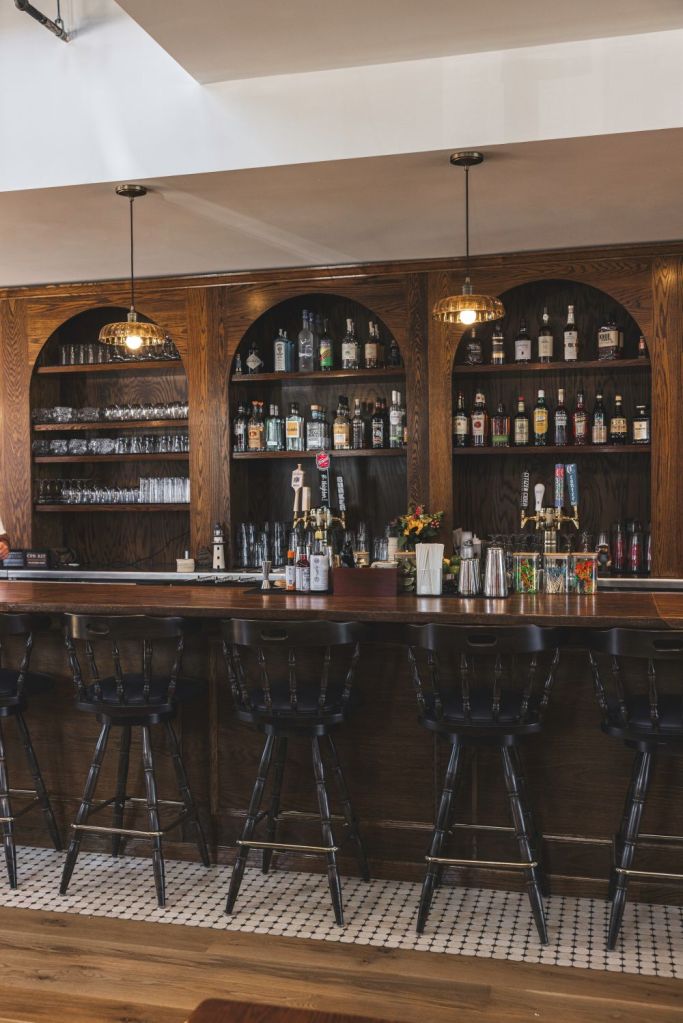
PORTLAND — The plates at Dry Dock transported me — to where, I wasn’t sure. Oval with green lines around the lip, they were just familiar.
Same with the spindle-back barstools and the dark brown lettering on the menu, where a Caesar salad, shrimp cocktail and broiled haddock make it clear that, when General Manager Matt Ginn left upscale Evo to revive the waterfront restaurant, he didn’t take his tweezers with him.
“I think people want a hot, comforting dish with a more substantial portion rather than a dish you can take a picture of and post on Instagram,” he said.
A new wave of Portland restaurants is leaning into that idea, serving classic dishes and comfort food in spaces that have a nostalgic feel, but in a more authentic way than a retro diner with jukeboxes or the hipster appropriation of vintage fonts and anthropomorphic food. It’s a trend in trying not to seem trendy.
“Timeless is a word I use a lot,” said Siobhan Sindoni, an owner of West End restaurants Wayside Tavern and the brand-new Gill’s Neighborhood Bar, where classic cocktails are the focus, paired with food you could eat every day, like chicken tenders and a wedge salad.
But these aren’t your average casual restaurants. They’re run by people with extensive hospitality experience who pay close attention to detail and have high standards for service and food, even when it’s onion dip. With the closure of many longtime establishments since the pandemic — think Parker’s in North Deering or Muddy Rudder in Yarmouth — they’re filling a void of midpriced dining options with broad appeal and doing it better.
“We’re not trying to reinvent eggplant Parmesean. We’re just trying to make the best version we can that still feels familiar,” Josh Sobel said about Benny’s, the red-sauce joint he opened on Congress Street in May, modeled after restaurants he grew up going to in South Philly, complete with garlic knots in wooden bowls.
Sobel and others were careful not to use the word “elevated,” for the same reason he didn’t love hearing Benny’s described as “hipster Italian.”
“We wanted it to feel like it had been there for a long time,” he said. “That was really important to us.”
That’s the thought Sean Wilkinson had last week walking by Gill’s neon sign with its tilted martini glass. The co-founder of Portland hospitality branding firm Might & Main said the Spring Street bar seems like it could have been around for 50 years but is “just hip and cool enough to be clear that it’s new.”
The trend he sees in these restaurants (none of which are his clients) is that they’re trying not to look like they’ve been designed but are “authentically of a certain era, with just the subtlest hint that there is somebody smart behind the scenes making those decisions.”
That concept isn’t completely new to Portland, he said, offering Woodford Food & Beverage and Rose Foods as earlier examples. But the style of restaurants these latest openings are emulating is from a slightly more recent time — one that most of the adult population remembers and is probably looking back on fondly, in the face of the current political and economic climate.
“Nostalgia is always a feel-good feeling for a reason. It’s remembering the past without remembering the bad stuff,” Wilkinson said, adding that it might be particularly poignant in Portland because the city is changing so quickly.

National Restaurant Association Chief Economist Chad Moutray said when there’s a lot of economic change, “people are looking for some of those classic foods they might have eaten as a kid,” noting a recent resurgence in the popularity of Hamburger Helper.
Comfort food, in general, tends to trend during uncertain times, he said, and the association is seeing it rise to the surface in its research of what’s coming in 2026.
“Consumers are very anxious right now. Businesses are anxious right now,” said Moutray.
From the perspective of the kitchen, the increasing costs of goods and labor doesn’t lend itself to manipulating food in the way fine-dining demands, said Ginn of Dry Dock. Plus, he thinks the aesthetic that he and a generation of young chefs chased, inspired by renowned Nordic restaurant Noma with its minimalist plating of foraged food, is “played out.”

In opening Gill’s, Sindoni said they hoped to fill a gap she’s noticed in the West End, and Portland in general, between “very specific, very cheffy” restaurants and super casual spots like Ruski’s.
Gill’s, whose name is lifted from the store that occupied the space in the mid-1900s, is inspired by the types of places Sindoni and her husband like going themselves, particularly the old-school bars of San Francisco.
As restaurants continue to close and others replace them, Wilkinson sees the Portland dining scene as self-correcting.
“We’re kind of getting the places people want to be eating at,” he said.



We invite you to add your comments. We encourage a thoughtful exchange of ideas and information on this website. By joining the conversation, you are agreeing to our commenting policy and terms of use. More information is found on our FAQs. You can modify your screen name here.
Comments are managed by our staff during regular business hours Monday through Friday as well as limited hours on Saturday and Sunday. Comments held for moderation outside of those hours may take longer to approve.
Join the Conversation
Please sign into your CentralMaine.com account to participate in conversations below. If you do not have an account, you can register or subscribe. Questions? Please see our FAQs.